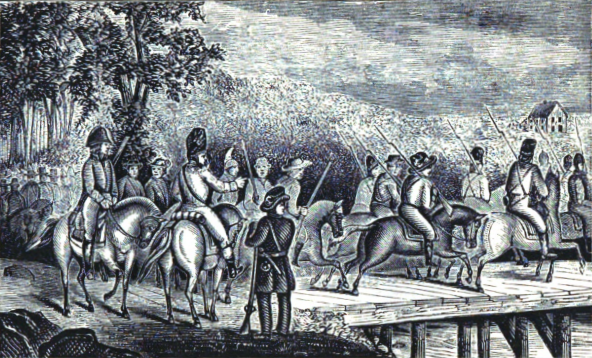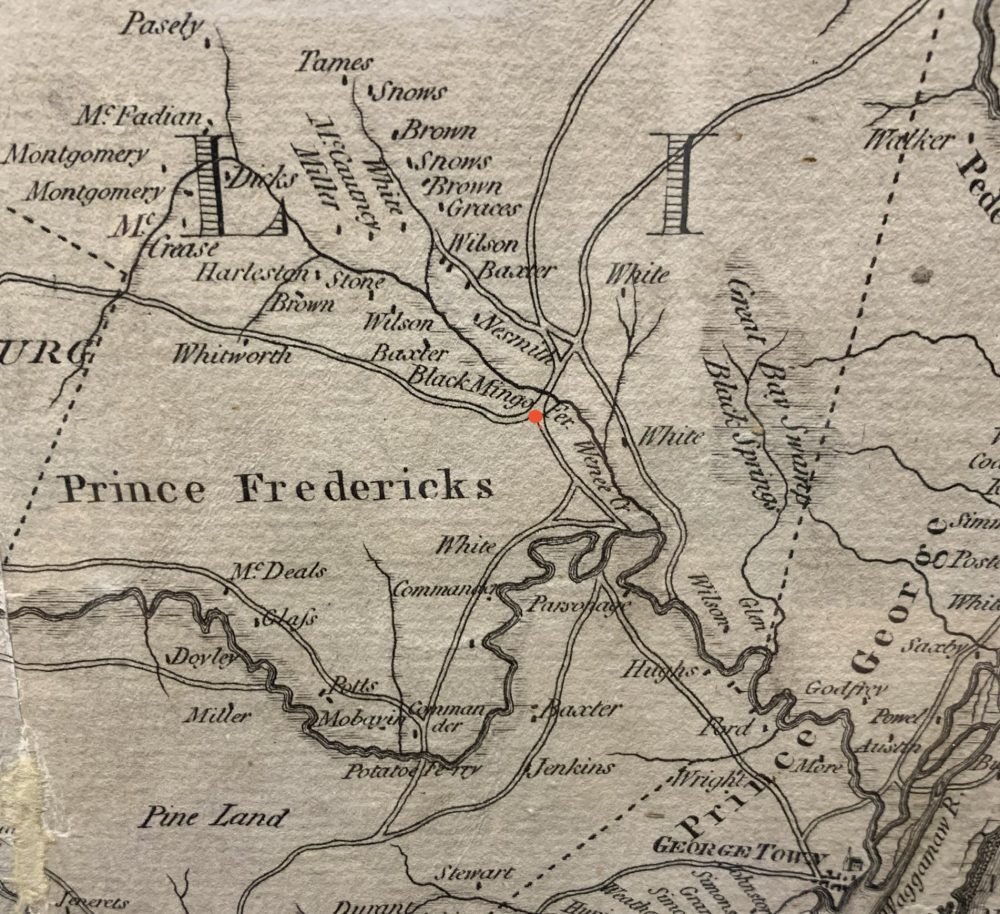The SCHS Archives will be closed June 16 to 27 for renovations.
In 1780, the British shifted their strategy from fighting in the Northern colonies and focused on the South. They captured Charleston at the end of March and searched for established strongholds throughout the colony. Upon entering the Georgetown District, the Redcoats expected to find loyal subjects who would support their war effort. While they did find numerous Loyalists among the population, they also found many Patriots. Unhappy with the lack of loyalist support, the British began a campaign to punish local Patriots and others who refused to cooperate. In an effort to “strike terror into the inhabitants,” Colonel Banastre Tarleton travelled through the Black River region in August 1780 creating chaos amongst settlers.

General Marion crossing Black Mingo from “The Life of Francis Marion” by William Gilmore Simms, 1858.
While Tarleton’s actions of cruelty enraged locals, it was pale in comparison to the devastation inflicted by Major James Wemyss in the Georgetown District. Wemyss and his men burnt plantations and churches along their way to Black Mingo Creek. His aim was not only to intimidate Patriot supporters, but to gain control of the waterways and highways in the Black Mingo area. To aid in this effort, the British posted forty-six men at the Red House Tavern, an establishment near Shepherd’s Ferry on Black Mingo Creek. While the British mistakenly thought they had gained the upper hand, their acts of cruelty angered settlers and increased the ranks of the Patriot cause.
In September, General Francis Marion returned to Georgetown District from an encampment in North Carolina. When he reached Lynch’s River, he was joined by Captain John James, Jr. and Captain Henry Mouzon. They brought with them the news that the British and Loyalists were camped at the Red House Tavern. Close to midnight on September 28, Marion and his men reached Black Mingo and crossed the bridge spanning the creek. Unfortunately, the noise caused by troops crossing the bridge awoke the Tory guard, who hastily readied for battle. Marion then divided his troops to flank the enemy and the fight ensued. Lasting only a half an hour, the battle was a clear victory for General Marion and his Patriot forces. The Patriots suffered two deaths and eight wounded while the British suffered three dead, one wounded, and thirteen captured.

Map: Segment from An Accurate Map of North and South Carolina…by Henry Mouzon, 1775.
After the encounter, the remaining British troops fled into the swamp and left behind a valuable cache of supplies that Marion quickly seized. Along with the supplies, it is said that General Marion also took possession of British Colonel John Coming Ball’s horse, renamed him “Ball,” and rode him throughout the rest of the war. The victory saw the forces under Marion gain complete control of the Black Mingo area and ended the British effort to establish strongholds in the Georgetown District. The victory at Black Mingo signaled a small but significant turning point for the Patriot cause in South Carolina.